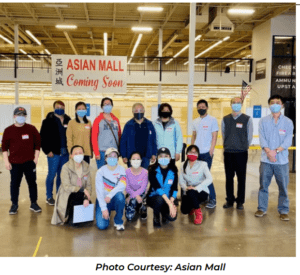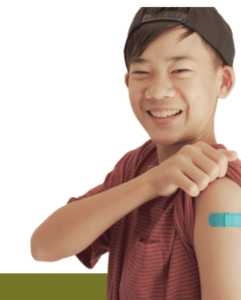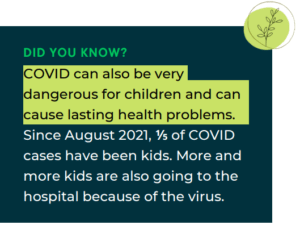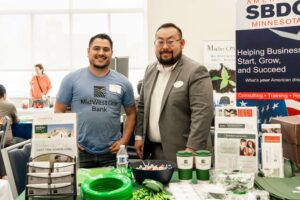
Asian American and Pacific Islander (AAPI) communities in Minnesota face increasing health challenges from COVID-19. Asians make up 5% of the Minnesota population but 8% of critical COVID hospital cases. As of April 2022, over 63,900 Asians have gotten COVID in Minnesota alone, and over 470 died from it, according to the Minnesota Department of Health.
We often talk about an Asian American Pacific Islander community, but there are many different communities with Asian and Pacific Islander heritages in Minnesota. The Coalition of Asian American Leaders reports that COVID was the top cause of death for Hmong, Karen, and Karenni Minnesotans in 2020. 29% of Hmong, Karen, and Karenni deaths in Minnesota were from COVID compared to 11% of deaths among white Minnesotans. Overall, half of Asian Minnesotans who died from COVID were Hmong. This suggests that public health programs are not effectively supporting and reaching diverse AAPI communities.
Asian cultural beliefs about wellness
Many Asian cultures have customs and beliefs that help them protect communities from viruses like COVID. For example, many Asian cultures put community and family first. This has encouraged social distancing and wearing masks. Those actions help stop the spread of COVID.
Asian philosophies of health and medicine have a long and well-tested history. For example, practitioners have been developing and improving acupuncture for over 4,000 years.
Asian medicine differs from Western approaches that focus on treating specific diseases and symptoms. Asian medical practices often support whole-body wellness and try to bring the body into balance with the environment. This can mean eating and sleeping well, exercising, and adjusting to the season.
Using natural ingredients and processes is also central to many Asian medicine practices. For example, herbal medicines are often the first choice for treatment. The preference for natural solutions is one reason why many AAPI people choose to naturally build immunity instead of getting vaccinated.
Natural remedies are great for staying healthy long-term, but COVID poses a severe and immediate danger. Extra efforts are needed to stay safe, and vaccines can make a big difference.
Ange Hwang, a Minnesotan and Executive Director of Asian Media Access , shared, “Last year was my first time to take the initiative to get the seasonal flu shot along with COVID-19 vaccine shots. I usually feel safe even catching the flu, with a couple days of rest, I would recover. But the speed of COVID-19 spreading and the severe sickness it caused alerted me to get vaccination ASAP to better protect myself and my family.”
Far from being unnatural, vaccines support your body to build immunity in the same way as if you got the real COVID. Vaccines train your body to fight COVID and naturally build an immune response. Getting COVID causes many dangerous reactions in your body. But vaccines allow you to build immunity in a safe and predictable way.

Care for children
COVID can also be very dangerous for children and can cause lasting health problems. Since August 2021, ⅕ of COVID cases have been kids. More and more kids are also going to the hospital because of the virus. Vaccines help protect children. The Pfizer vaccine is safe and available for children 5 years old and up. It comes in two doses that were designed for kids ages 5-11 and 12-17.
Many Asian parents are worried about whether the vaccine dose is safe for their small children and why the vaccine doses are by age and not weight. Weight is important when giving the right amount of medicine (like Tylenol). Medicines work when a certain level makes its way through the bloodstream. But vaccines don’t work the same way because vaccines do not contain drugs.

Vaccines work by turning on the immune system. So, the most important factor is how quickly a child’s immune system reacts. This depends on the development of a child’s body. Development depends on age, not size. That is why the vaccine doses are adjusted to age. Puberty starts at around 12 years old. This is when children have many hormonal and developmental changes. That is why 12 years was chosen as the cutoff between the two vaccine doses.
The vaccine was tested on 3,100 children of all races, including 90 Asian children. It was approved because it does not cause any serious safety issues for kids. Being fully vaccinated (2-3 doses) is important for maintaining strong immunity. Kids aged 5-11 group are severely under-vaccinated. On April 27, 2022, the Minnesota Department of Health reported that 42 percent of kids in this age group have received a dose of the COVID vaccine, and only 38 percent are fully vaccinated.

Community safety
Staying safe is an individual, family, and community effort. When more people get vaccinated, it becomes more difficult for the virus to spread. That’s why vaccines are about community well-being as much as personal health. Creating strong immunity in the whole community is important for protecting older adults and people with other health problems. Getting vaccinated honors your responsibility to family and community wellness. Doctors and nurses are ready to answer your questions and ease your worries. So, keep asking questions and talking with family members and friends about their vaccine experience. That will help you decide whether vaccines are right for you and your family. For more information, visit projecthealings.info.
REFERENCE:
* A Race to Close the Disproportionate COVID-19 Death Rates in Minnesota’s Asian Community. (2021). Coalition of Asian American Leaders, Hmong Public Health Association, Southeast Asia Resource Center, University of Minnesota School of Public Health. * Situation Update for COVID-19—Minnesota Dept. Of Health. Retrieved April 28, 2022. * www.amamedia.org * COVID-19 vaccines for kids: What you need to know. (n.d.). Mayo Clinic. Retrieved April 28, 2022, from Gurtman, A. (2021, November 2). BNT162b2 (COVID-19 Vaccine, mRNA) Vaccine –in Individuals 5 to <12 Years of Age. * COVID-19 Vaccine Data. (2022, April 27). COVID-19 Updates and Information – State of Minnesota
English Version Chinese Version French Version Hindi Version Hmong Version Khmer Version Oromo Version Somali Version Spanish Version Swahili Version Thai Version Vietnamese Version